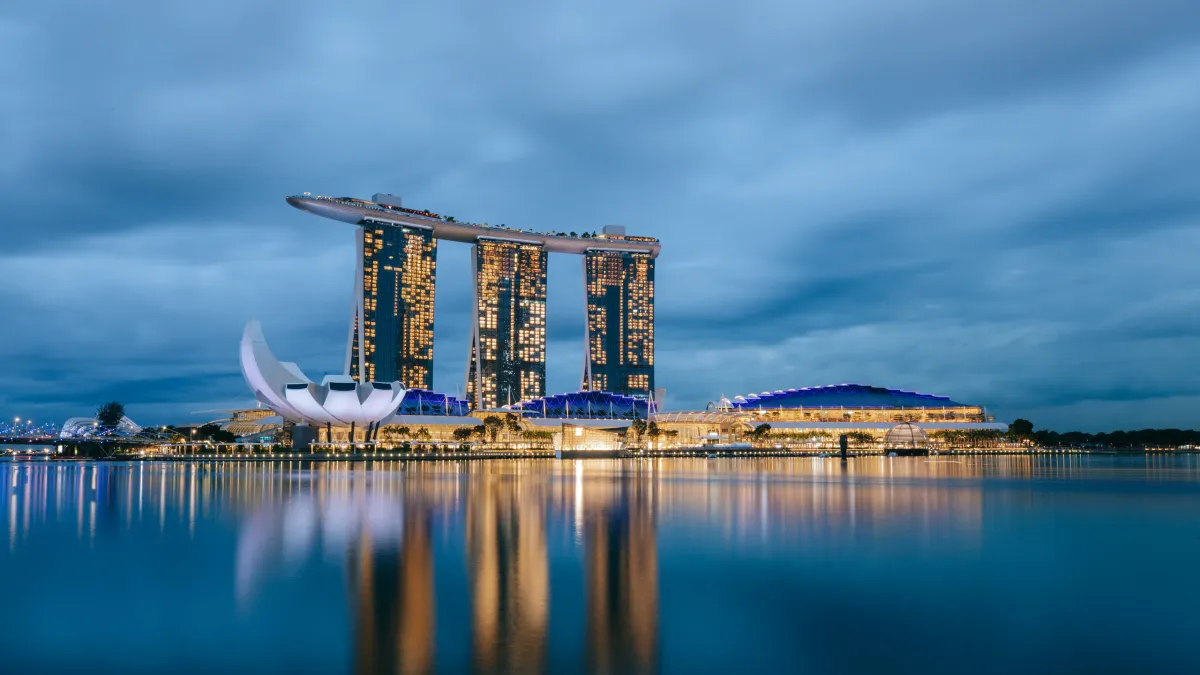Singapore will become the epicenter of the world’s next healthcare revolution
From integrative medicine sandboxes, global pharma hubs to free hospitals, Singapore is quietly building a new model—one that blends science, tradition, equity, and policy.

Can a small island country become the epicenter of the world’s next healthcare revolution?
As a resident who has lived in Singapore for over a decade, I wouldn’t have imagined it, until recently. In the past few months, my work has taken me across the Asia-Pacific, exploring the frontiers of the health and wellness industry. However, I find myself circling back to one conclusion: Singapore may be the future capital of global health innovation.
It may sound counterintuitive. Health innovation is often associated with nations that have large populations—more data, more clinical trials, more demand. But after attending the recent Belt and Road Initiative Health Conference in Jakarta, hosted by the UN Global Compact, I returned home with fresh eyes. And what I saw was systemic strength.
Singapore, a multi-ethnic island of just 720 square kilometers, is quietly constructing one of the world’s most unique healthcare ecosystems. It is doing so by combining visionary policy, world-class science, cultural pluralism, and a deep-rooted commitment to health equity. Here are my four observations:
1. Policy Innovation — A Regulatory Sandbox for East-West Medicine
This past weekend, Singapore’s Ministry of Health officially launched its Integrative Medicine Sandbox—a national program that allows 18 traditional Chinese medicine (TCM) therapies to be trialed within public hospitals. These include acupuncture for migraines, herbal remedies for cancer recovery, and more (MOH Singapore, July 6, 2025). All therapies will undergo evidence-based evaluation and, if successful, may eventually be covered by the national health insurance scheme. The significance? For the first time outside of China, a government is building a structured pathway for traditional medicine to evolve as regulated care. If successful, Singapore may become the most advanced TCM ecosystem outside China—and perhaps the most credible bridge between tradition and modernity in medicine.
2. Biopharma Platform — Asia’s Engine for Pharmaceutical Innovation
Singapore’s ambitions in life sciences are not new—but they are accelerating. At Biopolis, the nation’s biomedical R&D hub, four of the world’s five largest pharmaceutical companies—Pfizer, Novartis, GSK, and Sanofi—have established regional bases (EDB Singapore, 2023). GSK recently announced a $343 million expansion of its vaccine production plant. In 2024, AstraZeneca committed S$2.5 billion to build the world’s first next-generation cell therapy facility in Singapore.
Fueling these moves is the government’s S$25 billion RIE2025 investment in research, innovation, and enterprise—of which “Human Health and Potential” is a central pillar. In short: Singapore isn’t just a place where science happens. It’s where science translates from lab bench to bedside, to global market.
3. A Living Ecosystem of Traditional Medicine and Cultural Therapies
As a multicultural society, Singapore doesn’t treat traditional medicine as a niche—it lives with it, daily. One in five Singaporeans uses TCM regularly. Nearly 40% combine it with Western medicine to treat the same condition (SingHealth, 2023).
This cultural fluency is now attracting global investment. In 2024, Japan’s Rohto Pharmaceutical and Mitsui & Co. jointly acquired Eu Yan Sang, a 140-year-old Singapore-based TCM company with deep Chinese roots. It was a landmark moment—marking Singapore not just as a user of traditional medicine, but as a valuation hub for Asia’s healing systems.
Meanwhile, India’s Ayurvedic Practitioners’ Association is introducing integrated Ayurvedic therapies into Singapore’s wellness ecosystem. Malay herbalists and Indonesian jamu retailers now operate alongside yoga studios and AI health startups. Together, they form a real-world laboratory for pluralistic, culturally embedded healing—where wisdom traditions and medical science are not in conflict, but in quiet collaboration.
4. Health Equity — A System That Balances Access and Excellence
Innovation means little without inclusion. And Singapore, for all its reputation as a wealthy nation, has cultivated a parallel tradition of medical generosity.
At century-old institutions like Singapore Chung Hwa Medical Institution and Thong Chai Medical Institution, more than 1,000 patients receive free or subsidized TCM treatment each day. Elderly residents, low-income families, and even migrant workers turn up before dawn to queue. Their care is made possible by a combination of public support, donor funding, and volunteer doctors.
Meanwhile, Singapore’s public hospitals remain efficient and widely trusted. Its private sector—home to facilities like Raffles and Mount Elizabeth—caters to elites and global medical travelers.
During the COVID-19 pandemic, Singapore’s case fatality rate remained below 0.1%, among the lowest in the world (WHO, 2022). This success was driven by universal testing, free vaccination, real-time digital tracing, and multi-lingual public health communication.
Beyond the crisis, institutions like the Health Promotion Board and international NGOs such as the Singapore Red Cross continue to shape a national ethos of preparedness and shared care. Here, technology and compassion don’t compete. They reinforce each other.
Conclusion: Could the Future of Global Health Begin in the Lion City?
While the world debates how to fix skyrocketing medical expenditure, and Western elites are fascinated by longevity pills or artificial organs, Singapore is quietly showing what a complete system pilot: a model where science and tradition are allies, efficiency and empathy are partners, and smallness becomes clarity, not constraint. This is not just an “Asian model.” It’s a future-facing prototype for the kind of healthcare world worthy of attention.



Comments ()